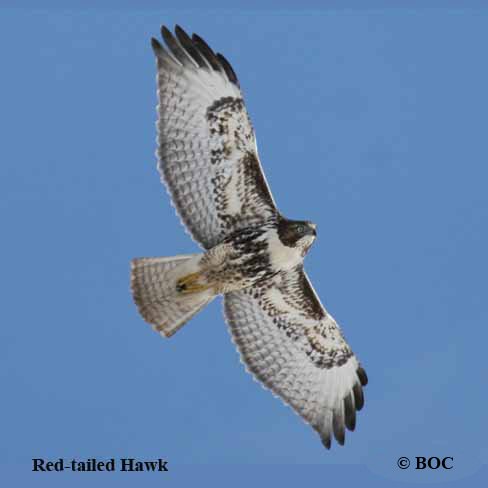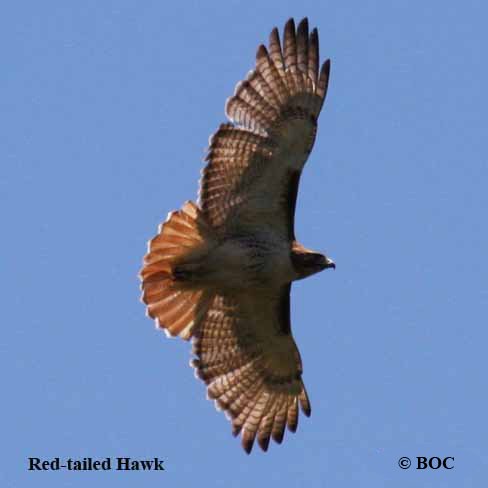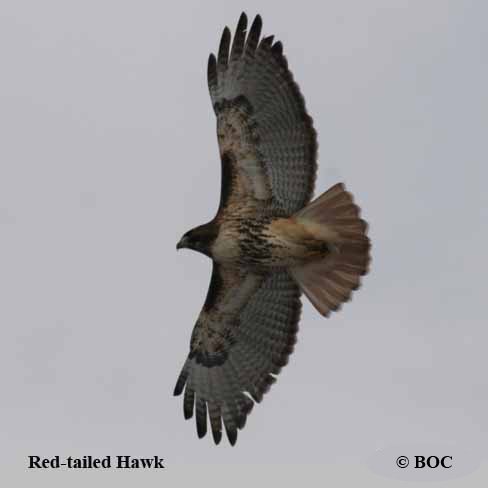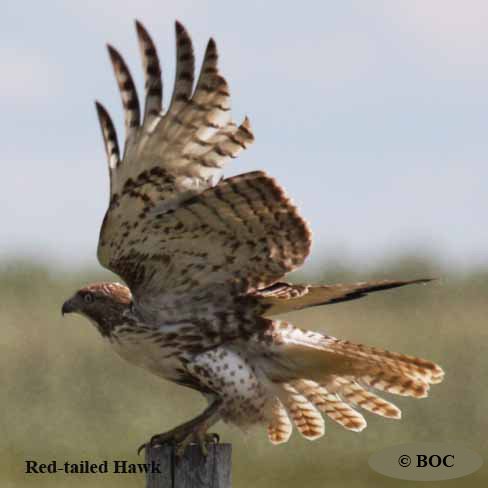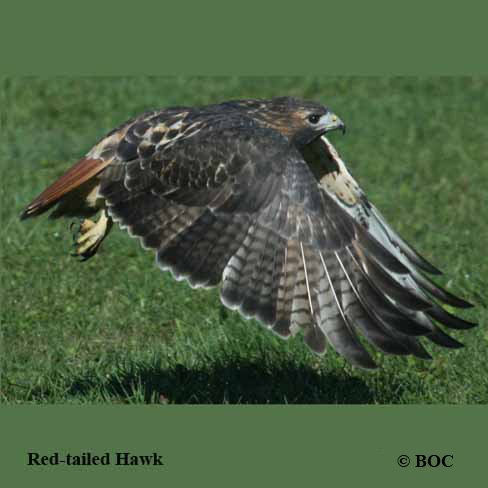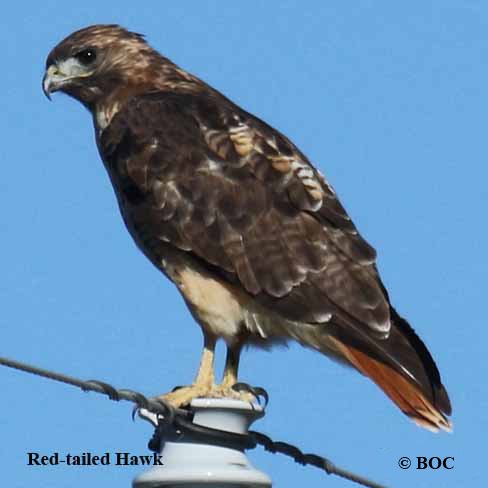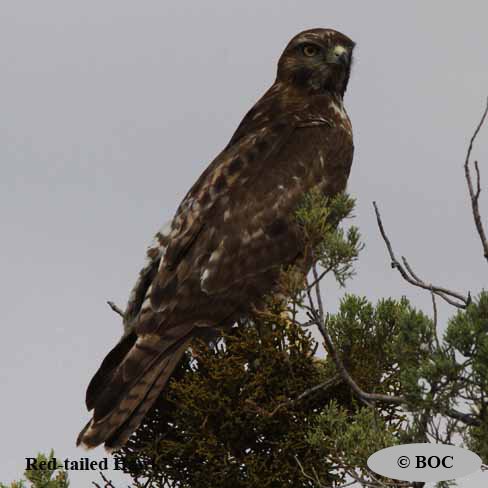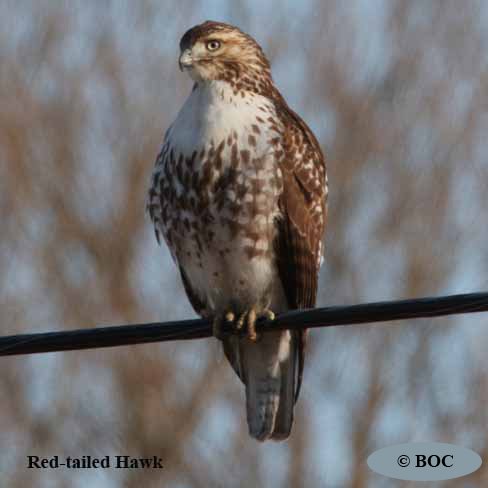Birds of Cuba Search Box
This search box can be used to find bird species using bird's english, french or latin name.
Birds of Cuba, Vagrant Visitors, Introduced Birds and Possibilities
Red-tailed Hawk
Buse à queue rousse
Spanish: Busardo colirrojo
Latin: Buteo jamaicensis
Information, images and range maps on over 400 birds of Cuba
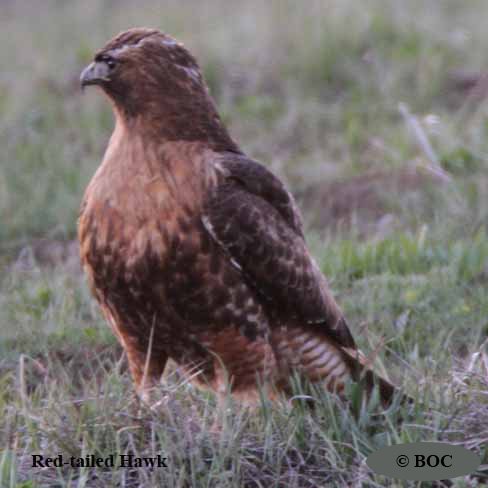
Life, Habitat and Pictures of the Red-tailed Hawk
| B L | W W | W | Family | Latin Name |
|---|---|---|---|---|
| 19" 48.3cm | 49" 124.5cm | 2.4lb. 1.1kg | Accipitridae | Buteo jamaicensis |
- Breeding
- Year Around
- Winter
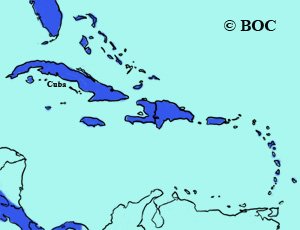
Found along the edges of open forest, common sight over open fields, often seen perched in the lower section of a tree, watching for any movement below. It is seen from Newfoundland/Labrador to Alaska, down into southern California, to the tip of Florida and into southern Central America and on the Caribbean islands. It is a native bird of Cuba.
